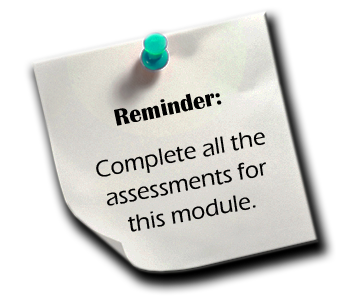Conclusion
This module explores seamless integration of transitions, routines for handling materials and supplies, and performance of noninstructional duties. The effective teacher is able to satisfactorily close one activity before launching another and can ensure that students are conscious of the remaining time available for a task. The effective teacher also recognizes the need to invest time in preparing for noninstructional duties such as enforcing discipline, monitoring students, managing resources, and communicating with parents. Teachers who teach and encourage students to assume responsibility for ensuring efficient procedures maintain a well-managed classroom.
Now that you've examined the Managing Classroom Procedures consider how might you answer these questions differently:
- How can seamless transitions in the classroom enhance student learning?
- How can the effective performance and management of noninstructional classroom duties improve the flow of instruction?
- How can the use of student-regulated classroom strategies improve the learning environment and impact student learning?
1. Take the Final Assessment.
Now that you have learned more about managing classroom procedures, compose a two paragraph response (five to seven sentences per paragraph) in response to one of the following two options:
- Explain why your response in the preassessment has changed. Support your rationale with examples from this module.
- If you believe the plan or system you identified in the preassessment is still the most effective, describe what you found in this module to validate your beliefs.
Provide your answers in the tab labeled Assessments. (Final Assessment 1.4)
| Page 1 | Page 2 | Page 3 | Page 4 | Page 5 |
Question |
Investigate |
Explore |
Practice |
Apply |
